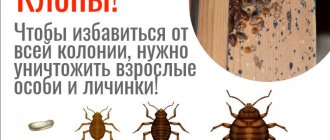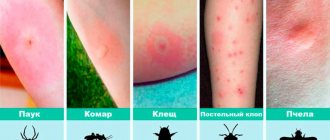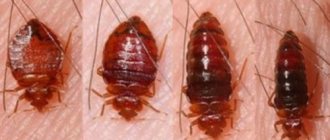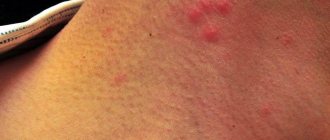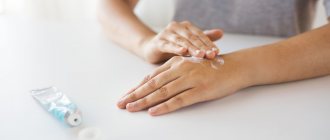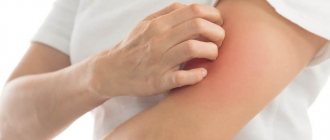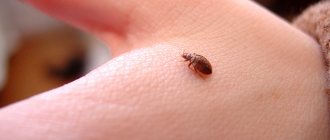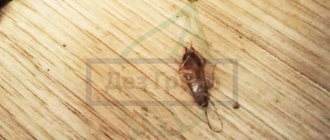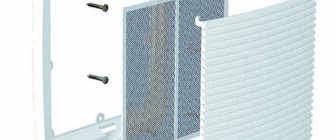Author: Michael Potter Updated: April 17, 2020
Bedbug bites can be a year-round nightmare. In this article you will learn how to distinguish bedbug bites from mosquito and flea bites and why a person does not feel anything at the time of the bite.
Let’s answer the popular question: “Is it true that even two people sleeping in the same bed can have completely different reactions to these bites?” We will also tell you how to relieve yourself of itching after a bite and prevent new ones from appearing. Forewarned - forearmed! Let's start!
Contents:
- The most important facts about bed bug bites
- Bedbug bites symptoms and differences
- What places do bedbugs like to bite?
- How do bedbugs bite?
- Allergy to bedbug bites
- How to treat bedbug bites?
The most important facts about bed bug bites
Do bedbug bites itch?
During a bite - no. You don't feel anything. You don't feel pain when you bite because the bedbugs inject a temporary analgesic under your skin to help keep you from feeling pain.
How long do bedbugs bite?
From 3 to 10 minutes - this is how long one full feeding lasts. It starts with the appearance of medium to large spots (swollen or flat) on any part of the human body (the most common places include the face, neck, arms and hands). Also, with the appearance of spots, itching and redness appear.
Bites from house bugs are often confused with bites from other insects. Sometimes they are mistaken for infectious rashes on the human body or even for injuries. And the true reason is determined in the very last place. There are cases when dermatologists confused bedbug bites on the body with chicken pox or an allergic reaction. Although for experienced entomologists, recognizing bites after bedbugs is not particularly difficult, since they have a distinct, specific appearance. It will not be superfluous to know the characteristics of bites for ordinary residents of apartments or private houses. The faster you recognize the presence of parasites in the room, the more effective the fight against these insects will be.
Parasites cannot tolerate strong odors. They confuse the insects. The bug cannot detect a person, and being in such a room becomes unbearable.
What do bedbug bites look like on adults?
Externally, bedbug bites on the skin resemble mosquito bites, but they are more painful and have clear edges.
If an adult is bitten by a bug, then a small, round, red swelling with a pronounced bump in the middle will appear on his body.
Multiplicity and grouping are the distinctive features that characterize bedbug bites on human skin. This is due to the fact that while feeding, each individual makes not one, but five or seven bites on the human body, sucking blood from each puncture. If the bites are located on the same line, then you can confidently conclude that you have been bitten by bedbugs. This arrangement is typical only for these parasites. As a rule, the distance between each subsequent bite made by one individual is from three to four centimeters. When studying what bedbug bites look like on the human body, remember that insects do not feed in an organized manner, but collectively. In other words, a large number of bites may appear on a person’s body in the morning, located close to each other. But in each group specific tracks will be clearly visible.
Before going to bed, apply a few drops of lavender, chamomile, lemon balm or St. John's wort essential oil to your body. You can add two or three drops to the cream.
It is worth noting that experts identify several dozen types of bed bugs. But individuals of each species bite people in almost the same way. All bedbug bites on the human body look the same, and the differences between them can only be seen with a microscope.
What do bedbug bites look like in children?
Children are a special risk group. In apartments or private houses where house bugs live, small children will be the first to be attacked. This is due to the fact that babies have more delicate and thin skin, to which blood vessels are located very close. At the same time, body odor in children is not as pronounced as in adults. It does not cover the smell of blood, which attracts bedbugs.
Externally, bedbug bites in children look similar to the bites of adults. But, if for men this situation is not a problem and a bug bite can become almost unnoticeable by the morning, then for children the situation is different. Children's skin is very sensitive, and a domestic bug bite will leave a mark for a long time. Moreover, the areola of redness near the bite itself will be bright red and large. And if you also take into account that the place where the bugs bit is itchy, then small children will definitely aggravate the situation. Therefore, adults should use a special anti-bedbug ointment or other medications at the first suspicion.
Bedbug bites symptoms and differences
In most cases, bedbugs attack at night. And only in the morning a person notices inflamed areas on the body.
If you have bed bugs, bed bugs, symptoms and other features should be carefully studied. To do this, we highlight important key points that allow a person to determine that a mark on the skin is the result of a bedbug bite:
- severe itching and burning;
- pronounced tubercle;
- there is a red areola around the tubercle;
- number of bites from three to five in one area;
- bites are located in a straight line;
If you find similar features in bites, inspect the bed. Drops of blood or black spots may remain on the laundry.
Bed bugs that have drunk enough blood can be easily crushed by hand while sleeping. Their remains are visible on the bed.
Bedbug bites differ from flea or mosquito bites in their multiplicity. They are also more red and very painful. Unlike ticks, bedbugs, on the contrary, leave soft and small punctures. In this case, during a bite, the bug plunges into the skin almost with its head. They also differ from allergies. An experienced dermatologist will notice with the naked eye a small puncture from a bite on the red bump.
The first signs that bedbugs have appeared in the house
At first, bedbugs live unnoticed, not indicating their presence in any way. Rare bites are often not even noticed by residents of the house. Only over time, when the colony grows to an impressive size, do residents begin to suspect that blood-sucking pests have infested the apartment.
At this stage, it is more difficult to control bedbugs. Much more difficult. The more bedbugs in the house, the more difficult it is to get rid of them. Therefore, it is a good idea to know the first signs that bedbugs have appeared in the house:
- The most demonstrative sign of a residential area being infested with bedbugs is bites . At first, the bites have virtually no effect on the life of the apartment residents, but as the parasite population grows, the number of bedbug bites increases, with all that it entails: swelling, allergic reactions (especially in children), multiple bites.
- Discomfort and poor sleep . Constant bed bug bites, accompanied by annoying itching, create discomfort and interfere with normal sleep. This results in lack of sleep and irritability, which interferes with normal life and work.
- Traces on the sheets . When a bug bites a person, it begins to feed on his blood, significantly increasing in size. In this form, bedbugs can be easily smothered when, for example, a person turns in bed from side to side.
If you find several bites of unknown origin on your body that constantly itch, pay attention to the bed. Small reddish-brown spots on your bedding may indicate that you have bedbugs in your apartment.
What places do bedbugs like to bite?
The bug mainly bites at night and in those places where the skin is thinnest and the blood vessels are located close to the surface. Parasites are primarily attracted to exposed areas of skin, and only then do they get under clothing and continue to suck blood. Most often, vinegar for bedbugs can be found:
- on the back and shoulders,
- on the legs and arms,
- on the neck and back of the head.
Quite rarely, marks appear on a person’s face or stomach.
I had bedbugs in my apartment that were discovered after the first bites. Before going to bed, I lit an aromatic lamp with the scent of lavender, put a few drops of oil on the night lamp and put lavender sprigs under the bed. The insects stopped biting.
How do bedbugs bite?
The parasite's mouthparts resemble a proboscis. With its help, the insect pierces the human skin and sucks out blood. Blood is the food for these insects. The process is quite simple. The parasite chooses a suitable place for it and bites through the human skin. After this, he sucks some blood from the resulting hole and moves further along the body. At a distance of three or five centimeters, it again bites through the skin and drinks blood.
At one time, an insect can make five or seven bites and only then get enough.
But do not forget that only one bug makes 2-3 bites per night! How many of these live in your bed?!
According to scientists, up to several thousand bedbugs can live in one bed. But this is not the limit: there is a real case when 150 thousand bedbugs were found in a single room, most of which lived in the bed! Therefore, if at least a tenth of this army of thousands is hungry, in the morning your body may be covered with multiple red itchy bites.
Bedbugs are not afraid of light and can bite even during the day.
Despite the fact that bedbugs only come out to feed at night (usually from 3 to 8 o’clock), in exceptional cases this can also happen during the day. This happens if the bedbugs are very hungry (so you understand what “very” means: bedbugs can live UP TO A YEAR without food!). What is force majeure for a bedbug? This is the absence of people nearby snoring peacefully at night. At risk: laundries, public transport, airports, offices and any other non-residential premises.
The following follows from this fact: bedbugs will not be afraid even of bright daylight or artificial light if they want to get their portion of blood. And they will want to!
Bedbugs bite all year round
Unlike other biting insects that have certain peaks of activity, bed bugs will live in your warm bed winter and summer unless you get rid of them.
Do bedbugs bite dogs?
Yes, they bite. Sometimes the most severe suffering from bedbug bites falls on dogs, and while in the house, bedbugs can feed on their blood for a long time before moving on to you. Why is this happening? It's simple: dogs, like cats, sleep most of the day - up to 18 hours! This allows bedbugs to drink blood without any problems, either at night or during the day.
Can bedbugs bite through clothing?
It's possible. Bed bugs pierce skin and suck blood using their proboscis, but it is not designed to pierce fabric, plastic or paper. If you sleep in pajamas, this may work to your advantage, but not for long - bedbugs run quickly and will still get to open areas of the body.
How dangerous are bedbug bites?
This is the question that most worries people who have been bitten by bedbugs. According to entomologists, up to 27 viruses of various diseases can be found in bedbugs, but it has been proven that they cannot transmit diseases through a bite.
This fact cannot but rejoice. Unlike the reactions of the nervous system to bites.
Scientists confirm that frequent bites may cause sleep disturbances, including insomnia, stress and irritability. It is believed that bedbug bites can cause constant crying in newborn babies. Also, in particularly severe cases, with significant blood loss, infants may develop anemia, and if the skin is particularly sensitive, any person may experience an allergic reaction.
Attention! Despite the fact that bedbugs are nocturnal insects, they are less afraid of light than of being hungry. They will come even if you turn on powerful spotlights in the room.
How long do the bites last?
Bedbugs need fresh portions of blood every 3-4 days, but if they have already managed to actively reproduce, then the bites will not have time to heal, because more and more new ones will be added to them. Since bites may not make themselves known immediately, you are unlikely to be able to pinpoint exactly what day you were bitten. As experts state, it can take up to 3-4 days for symptoms to appear, and in some cases up to 14.
Redness, itching, and swelling of the skin usually disappear within a few days. In more severe cases, for example, when a person has been bitten by hundreds of bedbugs, it will take longer - up to 3 weeks. If the bites do not go away, or you notice an increasing deterioration in your health, immediately consult a doctor - you may have an allergy, which should be treated under the supervision of a specialist.
Methods of destruction
Although there are many methods to combat bloodsuckers, getting rid of them is not easy. This is explained by the extraordinary vitality and high fertility of insects. It is enough for only one female to survive for a new generation to breed, despite all the measures taken.
Therefore, to effectively destroy bloodsuckers, it is advisable to combine various methods.
High and low temperature treatment
Pests die at both high (more than +45°C) and low (less than -25°C) temperatures. To get rid of clothing bugs, clothes can be hung out in the cold in winter, and in the sun in summer. Alternative methods of temperature exposure:
- boil the laundry or wash it in hot water;
- iron clothes;
- steam using an iron or steamer;
- place things in the freezer for several hours.
To get rid of bedbugs, you need to iron your clothes.
The best method is the use of special steam generators, which not only destroy insects, but also do not harm fabrics (unlike washing and boiling). If such a device is not available, it can be replaced with a simple device: attach a hose or rubber tube to the spout of the kettle and steam the clothes for a few minutes.
Chemicals for destruction
To control pests, you can use chemicals that are available in the form of aerosols, sprays, liquid solutions, and powders. The most effective of them: “Raptor”, “Clean House”, “Combat”, “Raid”, “Tsifoks”, “Karbofos”, etc.
To remove bedbugs, you need to:
- Treat things with insecticide (according to the instructions). It is advisable to do this on the balcony or street. It is recommended to wear a mask to protect your respiratory tract.
- Place the laundry in a plastic bag.
- When the effect of the drug ends, wash the treated clothes and hang them outside for airing.
Folk methods of struggle
Folk remedies are widely available, cheap and easy to use. The main disadvantage is that they do not destroy pests, but only scare them away from places where clothes are stored.
Wormwood repels pests from clothing storage areas.
This effect is exerted by fragrant herbs and shrubs: wormwood, wild rosemary, lavender, tansy, mint. Their fresh branches should be placed on shelves with laundry. Alternative options are to rinse things in a decoction of herbs or treat cabinet doors with essential oils. To enhance the repellent effect, you can combine different plants.
When using natural repellents, you need to take into account a number of nuances:
- they are effective only in combination with other means;
- clothes acquire a specific smell that is not easy to get rid of;
- tansy, wild rosemary and wormwood can be dangerous for humans and domestic animals because they contain toxic substances.
Substances with a pungent odor are also suitable for repelling pests: ammonia, vinegar, turpentine. You need to soak or rinse things in a solution with the addition of these products.
Allergy to bedbug bites
The saliva of young individuals is considered the most dangerous. The allergen, penetrating inside, quickly spreads throughout the body. An allergic reaction can be local or general, worsening the condition of the entire body.
Allergy to bedbugs differs from other reactions in the following manifestations:
- In case of allergies, the bite mark exceeds 1 centimeter in diameter.
- A rash appears.
- Bite marks last for more than a week.
- Severe itching appears.
In addition to visual signs, other symptoms indicate the appearance of an allergy:
- Nasal congestion or severe runny nose.
- Dizziness, severe headache.
- Weakness.
- Labored breathing.
In rare cases, anaphylactic shock or Quincke's edema may occur.
Habitats of bloodsuckers
In everyday life, bedbugs are called differently: bed bugs, sofa bugs, house bugs, furniture bugs, clothing bugs. These are all one type of insect. The name depends on where they are found.
Bedbugs live under carpets.
Blood-sucking parasites settle in close proximity to the main source of food - humans. They often make nests not far from his sleeping place: in bedside tables, cabinets, sofas, beds, under mattresses. Thanks to their flattened body, arthropods are able to penetrate into the smallest crevices. At the same time, they choose warm, dark and hard-to-reach places:
- behind ceiling panels;
- under baseboards, window sills;
- between books on shelves;
- behind paintings, wall clocks;
- under wallpaper, carpets.
In some cases, pests live in the housings of household appliances, behind heating radiators, inside sockets and switches.
How to find and signs of their presence
The first thing to think about infesting an apartment with bedbugs is when bite marks appear on the residents’ bodies. These are red spots with a black dot in the center (the puncture site) and are often accompanied by itching. If you find them, you should start searching for harmful insects.
Using a flashlight, they examine their favorite habitats. The bugs present there will scatter, because they cannot stand bright light.
More often in the nests you can see not the bloodsuckers themselves, but signs of their vital activity:
- discarded shells - scraps of shells after molting larvae that look like husks;
- excrement (feces) – small black balls with an unpleasant odor;
- empty egg shells - formations similar to small grains of rice, with a hole for the larvae to exit.
You may notice signs of bed bugs.
Sometimes brown stains remain on the bed linen. These are drops of blood that are formed when a sleeping person crushes saturated parasites.
If there are too many bedbugs, a specific smell appears in the room - the aroma of old cognac or soured raspberries. The residents themselves do not always feel it, but strangers immediately notice.
How to treat bedbug bites?
As a rule, bedbug bites go away on their own after a few days. Men tolerate them especially easily. As for children, in this case certain actions should be taken. For example, you can use a special ointment for bedbug bites.
Medicines or pharmaceutical products to treat bites
If you don’t want to use traditional recipes, you can buy medicine for bedbugs:
Star
The most accessible and harmless remedy. If you lubricate the bite site with balm several times a day, the inflammation and itching will go away within a few days.
Price: 83 rub.
Bepanten gel
Suitable for people of all ages. The drug relieves itching, swelling and inflammation.
Price: 673 rub.
Psilo balm
Works like Bepanten gel.
Price: 239 rub.
Comparative table of remedies for bedbug bites
| Product | Type of impact | Price |
| Star | Relieves itching and symptoms of bites | 83 RUR |
| Bepanten gel | Heals damaged skin | 673 RUR |
| Psilo balm | Heals damaged skin | 239 RUR |
| If you have a severe allergy, be sure to go to the doctor | comprehensive approach, competent treatment | Depends on honey. insurance |
Treatment of a severe allergic reaction
The question of what to apply to bedbug bites when a severe allergic reaction occurs deserves special attention. If you are allergic to bedbug bites, treatment should be prescribed by a doctor. The specialist will prescribe antihistamines. This may be a cream, ointment or tablets. Most of the prescribed drugs are hormonal drugs. Therefore, it is important to correctly determine the dosage and course of treatment. Self-medication in this case is unacceptable.
Folk or home remedies for treating bites
If you don’t know how to treat bedbug bites, pay attention to traditional medicine. There are several home remedies that can help you cope with bites and alleviate their consequences:
- Redness and itching will become less severe if you rinse the bite area under cold running water.
- A bath with the addition of a decoction of St. John's wort, calendula and chamomile will help relieve the inflammatory process.
- Use alcohol to disinfect the affected skin area.
- You can lubricate the bite site with aloe juice or apply pieces of ice to it.
- Laundry or tar soap, as well as soda, are good for bites.
Remember! Bed bugs get used to the unpleasant smell. The use of aromatic oils is a prevention of bites.
The difference between bedbug bites and the bites of other insects, such as mosquitoes, fleas, etc.
It is somewhat more difficult to distinguish a bedbug bite from the bites of other insects, since all bites look approximately the same - a red spot accompanied by itching.
From a mosquito bite, a bug bite differs in a more defined shape. Flea bites are distributed randomly on certain areas of the skin (most often the affected areas are the legs, up to the knees), while bedbug bites are located approximately in one line. The pain from a midge bite is stronger, but the bite wound itself is smaller, with a drop of dried blood in the middle. Bites of large insects (bees, hornets, wasps) are always remembered by a person because of acute pain. Bed bugs bite unnoticed and the bite can be detected after some time.
Consequences of bites for the body as a whole
It is impossible to predict the consequences. Each organism is individual, as is the reaction to a bite. It is worth noting that children of bedbugs cause the same harm to humans as adults. If bedbugs have left bites on the body, they must be disinfected. Otherwise, an infection may develop on the wound, which will lead to a severe deterioration in the general condition.
After bedbugs leave bites on a person’s body, itching and burning appear, causing irritability, insomnia and even depression. You must immediately relieve the itching and begin exterminating insects.
How to treat and treat bedbug bites?
Unfortunately, there is no universal remedy for dealing with such a nuisance, since the reaction of each person is unpredictable. A normal bite goes away in about ten hours, while when an allergic reaction to a bug bite occurs, the healing time takes days (two or three). As a rule, a blister appears at the site of the bite, which bursts and then disappears completely. If you need to relieve symptoms such as itching or burning, you can use ice, an anti-itch ointment, or take an allergy medicine that contains an antihistamine.
You can buy ointment for bedbug bites, which will help relieve irritation at the site of injury, at any pharmacy, for example, Fenistil gel or Rescuer. Classic remedies for allergic reactions - Tavegil, Suprastin, Claritin. Before applying the cream or ointment, it is recommended to disinfect the inflamed area with a cotton pad moistened with medical alcohol or chlorhexidine; this will also help relieve inflammation; try not to scratch the bite.
If you don’t have Fenistil ointment on hand, you can treat the damaged areas with the following means (not all together):
- tincture of calendula,
- Activated carbon,
- camphor alcohol,
- Sulfuric ointment,
- cologne,
- potassium permanganate solution,
- lemon juice.
These handy remedies will help relieve itching and redness.
If the bite mark does not heal for a long time and causes pain, or if green, yellow or white discharge appears, you should immediately contact a dermatologist: in such cases, only a professional can choose the right treatment. Infections that develop in heavily scratched areas may require the use of strong antibiotics.
Bedbug bites in children
Above we described in detail what a bedbug bite looks like on the body of an adult. Parasites leave a similar mark on the bodies of young children. It is worth noting that insects bite small children more often than adults. This is due to the physiological characteristics of the child. Babies have more delicate skin and blood vessels are located closer to the skin.
Danger for children
The danger of bites for children is the high risk of an allergic reaction. The parasite's saliva contains a dangerous poison, which, when bitten, penetrates the child's skin and instantly spreads throughout the body. If the baby has a tendency to allergic reactions, then the consequences of the bite can be quite severe.
Another danger is the desire of children to scratch the bite. As a result, a wound forms on the baby’s body, on which other infectious diseases can develop.
Symptoms
After a domestic bug bite, redness appears on the child’s body, which is very itchy. In the middle of the red spot you can see a small bump. The number of bites ranges from three to five pieces. They are located in a straight line. Children become whiny, nervous and constantly scratch the bite sites.
Is a bedbug bite dangerous for humans?
Under normal conditions, when a person has a low level of sensitivity, there is no tendency of the body to allergies, there are no chronic diseases, including those of a dermatological nature, contact with parasites will not entail any serious consequences. If you are wondering why bedbug bites are dangerous, you need to remember that such insects do not transmit infections to humans, although they are carriers of the most severe of them (typhoid, anthrax, hepatitis, etc.). This is due to the structure of the oral apparatus.
However, if a child or an adult with a tendency to allergies or hypersensitivity is bitten by a bug, then the symptoms become stronger: the red spots increase, the skin in these areas swells, itches severely, and pain appears. The person's general condition worsens. Bug bites are dangerous in these cases, because the allergic reaction can be so strong that bronchospasm occurs and anaphylactic shock develops. Other pathological conditions that accompany the appearance of punctures on the skin:
- inflammation in places where the integrity of the skin is compromised;
- deep wounds in areas where bites are located, which occur due to scratching against a background of severe itching;
- psychological disorders: insomnia, irritability, aggressiveness, increased fatigue.
This means that the answer to the question whether a bedbug bite is dangerous for humans will be positive, but not always, but only if a number of conditions are met.
You should consult a doctor if a negative reaction continues to develop, even when its cause - the allergen - has been eliminated, as well as in cases of complications. You need to show the bites to a specialist, he will prescribe an appropriate symptomatic treatment regimen.
Why do bed bug bites itch?
The oral apparatus is designed in such a way that it contains separate tubules: for administering a substance whose properties resemble a local anesthetic, as well as for sucking blood. If the parasite is immediately saturated with blood, the person will feel pain and eliminate its cause. Therefore, nature took care of the safety of insects at the feeding stage. In this case, the parasite first injects an anesthetic substance contained in its saliva. Then he begins to feed. As a result, negative symptoms do not develop immediately.
Before a person feels severe itching from a bite, the body is exposed to a strong natural anesthetic, which the bug injects while eating.
Severe itching occurs suddenly when the anesthetic wears off. At the same time, pain may appear. It all depends on the body’s reaction, which develops as a response to the entry of foreign substances into the blood. The immune system suppresses the pathological process, which is accompanied by itching and an inflammatory reaction.
How long does it take for bedbug bites to go away?
It is impossible to predict when the signs of insect infestation will disappear. This is due to the fact that the body’s reaction to an allergen is always individual.
However, there are several general scenarios for the development of a situation when parasites attack:
- traces of bedbug bites disappear quickly - within the first day, sometimes much faster (in 12 hours), but in this case the spots are small in size or absent altogether, and in their place red dots (dried blood) appear;
- if you are wondering how long bedbug bites last with moderate development of the pathological process, in this case, eliminating signs of contact with parasites takes 3-5 days;
- if complications occur, recovery may be delayed, elimination of signs of an allergic reaction often occurs in 2-4 weeks, more severe complications (secondary infection, severe skin damage, anaphylactic shock, bronchospasm) require long-term recovery, and sometimes scars remain on the skin, for example, if The child scratched violently at numerous bites.
How to protect yourself from bedbug bites?
There are many myths on the Internet about what remedies help protect against bedbug bites. Here are the two most common myths:
- Repellent sprays will protect you from bites. Not true. Repellents can help against the bites of mosquitoes, ticks, and some other insects, but the bugs didn’t care what you sprayed on yourself.
- Insecticidal "bedbug bombs" can kill insects and thereby prevent their bites. Not true: unfortunately, they also don’t work, because the smoke from the insecticide cannot get into those hidden places where bedbugs are buried. Moreover: having felt such a chemical attack, the bedbugs will hide even deeper into their crevices - and then it will become even more difficult to get rid of them!
To protect yourself from their bites, you need to use only products tested and approved by scientists. And don’t forget: you need to get rid of not only adults, but also larvae and even potential adult biter eggs.
But not everything is so simple: you cannot destroy bedbugs with any one method. Along with thorough cleaning, you need to comprehensively use other methods, for example, an electronic bedbug repeller .
Here are 3 main steps:
- use bedbug detectors to identify the presence of bedbugs in the house and even their routes.
- “dress” your mattress in a special mattress protector to cure an old mattress or protect a newly purchased one from bedbugs.
- purchase an effective anti-bedbug spray to treat infested areas in the house.
Remember: up to 150 thousand bedbugs can live in your bed! So don’t delay and start the fight right now!
Destruction of bed bugs in clothes
To clean the room, you need to find and destroy insect nests. All furniture should be checked. She is freed from her things. Clothes are cleaned of traces of pest activity, but some of the wardrobe items cannot be saved.
To destroy bedbugs, different methods are used: physical, chemical and improvised means.
Pest extermination begins with treating furniture and cleaning clothes.
Heat and cold
These are the simplest and safest methods. Temperature exposure methods are less suitable for cleaning an entire room from parasites. But with their help you can get rid of pests on things at home:
- parasites die instantly at temperatures above +55°C, so they often use a steam generator, the boiling method, you can wash things in a washing machine (select +60°...+90°C mode), but bedbugs are not able to tolerate temperatures of +45°C, they die in such conditions in 45-60 minutes;
- clothing pests die in the cold, the lower the temperature, the faster you can achieve the desired result: the death of parasites occurs instantly at a temperature of -25°C, if the value of this parameter is -17°C, you need to keep the insects longer in such conditions (several hours).
Items infested with bedbugs should be washed at high temperatures and for long periods of time.
The best effective chemicals (preparations)
You first need to understand how to treat things for bedbugs. Basic Rules:
- an insecticide-based product is sprayed on the balcony or in the yard;
- the procedure is performed with gloves, a protective mask and goggles;
- You can wash things no earlier than the end of the period recommended by the manufacturer (for example, after 1-2 weeks), this time is allocated to wait for the larvae, which will allow them to kill the offspring.
You should not wash things with liquid insecticide-based products.
You need to remove parasites using aerosols:
- Raptor contains cypermethrin, tetramethrin, after processing a mint aroma appears, the drug begins to act after 15 minutes;
- Raid (cypermethrin, imiprotrin, pralletrin), this product can kill various insects (flying, crawling);
- Perfos-P is an insecticidal preparation, characterized by an unpleasant odor, effective for 2-3 weeks after spraying;
- Clean house - the composition includes substances of the pyrethroid class, they have a detrimental effect on the nervous system of bedbugs, regardless of where they are located (inside furniture, on clothes);
- Combat: active components belong to the class of pyrethroids, the drug affects the nervous system of insects.
Aerosol Raptor is suitable for use on clothing
Traditional methods of treating bedbugs
Consider non-aggressive means at hand, but it is important to remember that most of them do not kill insects. You need to understand how to get rid of bedbugs in clothes under the following conditions:
- prepare a strong-smelling solution based on vinegar (1:1), if you have supplies of this substance at home, you can try soaking clothes in it, only in this case the insects will die, and exposure to a strong odor will not provide the desired result - this method is used only to repel pests from the premises;
- washing with denatured alcohol, bedbugs in clothes will die quickly, but eggs remain, they can be removed from things, separately poured with poison or destroyed mechanically.
Essential oils, kerosene, turpentine, ammonia - all these substances that effectively repel insects from the apartment cannot be used to destroy parasites on clothes; difficult-to-remove stains may remain.
Video tip (photo + video): how to properly treat clothes if there is a suspicion that there are bed bugs on the clothes
How to wash clothes after bedbugs
You need to study the properties of the fabric. This will help you understand how to treat clothes against bedbugs:
- mechanically remove visible individuals, then burn them, otherwise the pests will survive;
- start the washing machine at high temperature (choose the one that best suits the conditions for caring for the fabric);
- the longer the machine washes, the better - and the higher the likelihood of parasite death;
- if there is a drying function, it is recommended to steam the clothes after washing for at least 20 minutes; you can also use a steam generator or an iron;
- It is allowed to boil things on the stove (if this is permissible taking into account the properties of the fabric).
It is recommended to use a dryer to completely disinfect clothes.

